7 Ways to Capture Character in Bird Photography

What moves you when viewing bird photography? Is it the composition, light, action, unique situation, evocative emotion, precise editing, or capturing character in bird photography?
Mastering the art of bird photography requires the synthesis of vision, artistic creation, camera skills, field techniques, dedication, persistence, and an understanding of bird behavior.



Fortunately, not all these concepts have to come into play when we go out to photograph birds.
As the photographer and artist, you will focus on what is important to you in conveying your vision.
From a broad perspective, consider what you want your photography to convey. In any given photography session, thought needs to be given to what you are trying to communicate or illustrate.
Although vision, communication, and style are easily topics of their own, I want to help you consider some tangible approaches in the field to help you tap into those broader concepts.

Ultimately, capturing bird photos with character is usually not done by accident. There are some important approaches, tactics, and techniques that can be employed to maximize your chances of creating bird photos with intrigue and emotion.
These might be the building blocks to help you start developing your vision and style for photographing birds with character.
1. Use eye-level perspective
Something simple and easy to do is to consider your physical perspective and positioning relative to the subject.
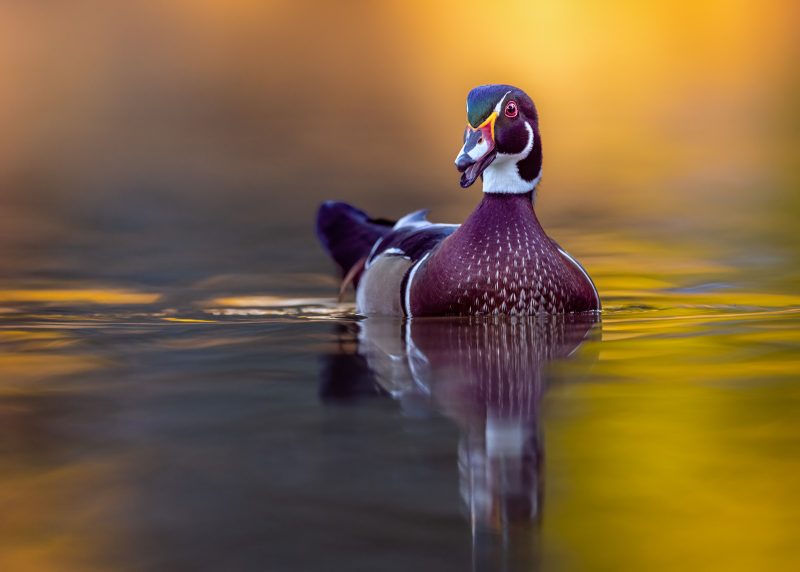
Eye level is the most common perspective for emphasizing a bird’s character. An image taken on the same plane as the bird connects the viewer to the scene and is a good starting point from which to build on additional techniques.
Getting eye level with the bird might only require you to sit down to photograph a bird near the ground or step up on a nearby log, rock, or dirt mound to photograph a bird on a higher tree branch. Look for various options to get eye level with the bird.
Top tip – you may need to simply back away from the bird to create a less steep angle of view, which results in the appearance that you are eye level with the bird!

Pre-planning your composition to be able to capture an eye-level image will help set you up for success.
Find locations where birds are frequently found closer to the ground or position yourself from a higher vantage point that provides a reasonably close distance to where they might perch in trees.
Spend your valuable time in the field at these more prime locations to increase your chances of creating images at eye level.

And remember that an eye-level perspective isn’t always necessary; photographing the bird from above or below still has some possibilities.
Capturing a unique feature or bird display, which we will discuss later, could be the only ingredient needed to make a bird photograph with character from any perspective!
Read more: How to Use Perspective in Nature and Wildlife Photography
2. Capture a pose or gesture
Another basic ingredient to create bird photos with character is to capture a unique pose or gesture. Even just a simple head turn can indicate that something new is happening in the scene and may add interest to your composition.

The key to this is patience. Wait to capture that unique moment when photographing a perched bird, and look out for behaviors like a subtle head turn, preening, catching a passing flying insect, a quick upward gaze whilst searching for predators from the sky.
Position the bird in the frame so that, when the unique moment happens, the resulting image will have balance.
It is usually beneficial to have some open space in the image frame in the direction that the bird is looking to keep the viewer’s attention within the image.

For example, if it is likely that the bird will look back over one wing to the left, you will want the bird positioned more on the right side of the frame. Leave space above the bird to accommodate that upward glance.

Look for those awkward moments as well. They can add humor to the image if the bird is briefly posed in an unstable or vulnerable position.
Watch for ruffled feathers during preening, an unusual pose as it repositions itself, balancing on one foot as it shifts its weight, or as it stretches beyond its perch to interact with other birds.
Spend some time with a perched bird to learn its behaviors.

If it strikes a unique pose and you miss the opportunity, it will likely do it again. Think about what pose or gesture provides that missing spark to the image, adding interest and character.
Have some patience!
Read more: Bird Photography Tips – Shooting Bird Portraits
3. Mystery and intrigue
Images that make the viewer think beyond the main features within the frame create intrigue and mystery. Intrigue will help keep the viewer in the scene, making the person linger and study the whole image.
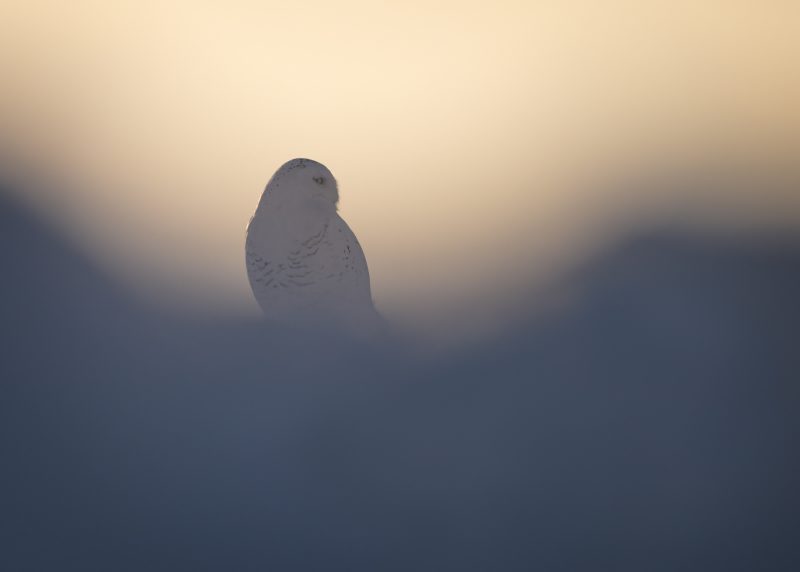
Often when photographing birds, you may find your subject obscured by branches and leaves.
You can take advantage of this by positioning yourself so that only the eyes or head are clear and in focus, while everything else is blurred out to draw the viewer’s attention to the eyes and offer intrigue.
A simple technique to create mystery is to partially obscure the bird with blurred foreground objects, only allowing key features of the bird to show through.
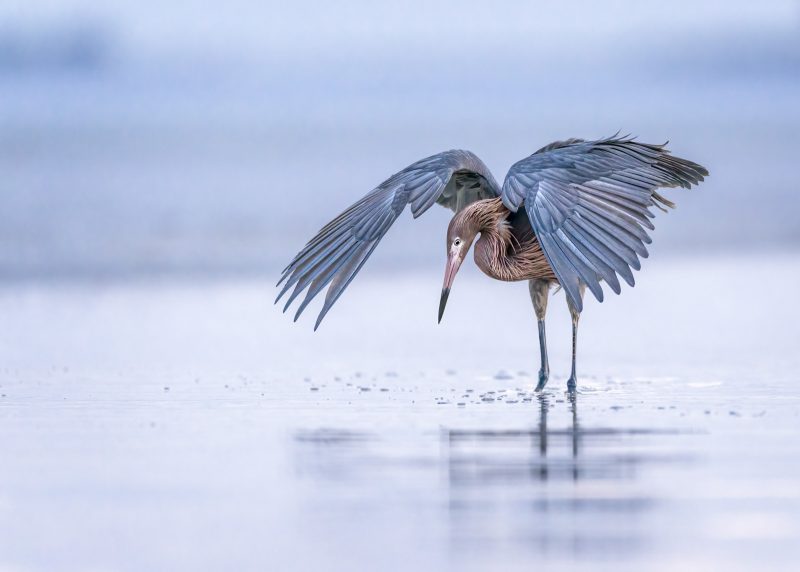
This not only focuses a viewer’s attention on important features but also makes the viewer wonder what else is hidden or beyond the scene.
Another technique is to purposely exclude from the frame features that are causing the bird to react or move in a certain way. The viewer is left with their imagination to add to the story that is being hinted at in the image.
4. Manipulate the Light
Backlighting is when the photographer is photographing toward the sun, with the bird illuminated on the opposite side, and this can certainly add dramatic character to your bird images! It is best done when the sun is low in the sky.

There will be a rim of light around the bird, particularly if the bird has a fringe of feathers. The side of the bird being photographed will be in shadow, as well as other surrounding aspects of the scene.
Overall, the image will be dark with obscured details of the bird and of the background, with only the outline of the bird in brilliant highlight.

With the darkened subject and background, this technique will provide a sense of mystery, leaving it to the viewer to imagine the scene and storyline.
You can also try using low-key and high-key lighting in low-light and bright-light situations, respectively.

Low-key photography is when much of the background and foreground are dark and in shadows, while the main subject might be lighter in tone.
Low-key images add a lot of mystery to images and draw attention to the bird as the subject.
If you see a bird in a dark forest, wait for it to move to a brighter spot in the forest. Be sure to expose for the bird in the bright location to minimize post-processing steps and allow the darker background to go almost black.

The opposite situation applies to high-key scenes, and they make for striking images. The relatively darker subject will be against a bright background like a cloud-filled sky or in a snowy scene.
Read more: How to Harness Light in Bird Photography
5. Life’s rhythms
Capturing images during a bird’s life stages helps tell the story of important aspects of existence and species survival.
Birds go from being chicks in the nest, then to fledglings on the nearby branches, followed by being awkward juveniles, maturing to young adults learning to fend for themselves, and finally to majestic mature adults.

Through a single image or body of work, seek to tell the story of the environmental challenges of a bird’s well-being during these life stages. This leads to photography that illustrates character and emotion and provides a glimpse into a bird’s life story.
Let’s start with courtship displays. Courtship behavior is fascinating and can provide unique and characterful photographic opportunities.
Each species’ behavior is completely different, ranging from subtle movements to elaborate displays to attract the opposite sex. Displays can often be quick and short-lived.

You will likely need similar camera settings as you would use for birds-in-flight, since movements are often fast, and the direction of the display can be unpredictable.
Allow for extra space around the displaying bird in case it suddenly moves across the frame.
A species’ display will often be diverse, so be sure to capture all possibilities and then concentrate on the most interesting pose.
If two or more birds are in the frame, consideration should be given to either keeping all the birds in focus or just the main performer.
Just focusing on the main displaying bird and leaving the others out of focus will draw a viewer’s attention to the displaying bird. Bring the other birds into focus if details are needed or if they are responding to the displaying bird.

The nesting season also offers opportunities to photograph birds with character. The first thing to remember is not to approach nests or even attempt to photograph nests that are vulnerable.
Knowledge and experience are needed before approaching nests for photography.
Knowing which species are susceptible to disturbance, the acceptable distances for approach, and understanding how your presence might bring attention to the nest and invite predators are considerations when wanting to photograph nests.
It is best not to approach nests unless you are with an experienced person or have already gained knowledge about the protection of nesting birds.
This is the renewal time for adult birds, to plan and build for their coming family. Depending on the species, nest building can offer exciting images that tell a story.
If you want to photograph a particular species, research their nest-building behaviors. The most common behavior is carrying sticks to the nest.
Birds will often take the same route to the nest or will consistently approach the nest by flying upwind. From a distance that does not disturb their activities, position yourself where you think they will approach the nest.
Birds-in-flight photography is a whole separate tutorial, but understanding the basic tactics of shutter speed, panning, and framing will get you started.

Dial in a shutter speed of at least 1/2000 sec and set the other controls to achieve a good exposure. It will take practice for smooth panning to follow the bird with the camera without too much camera shake.
Finally, allow for extra space around the bird in the camera frame (either by zooming out or moving away from the bird) to give yourself some cropping leeway when trying to keep the bird in the center of the frame.
There are so many other interesting photo opportunities during nest building as well. Look for the passing of nesting materials from one parent to another. Many birds constantly fuss with the nest, giving you some unique poses.
Chicks are extremely cute to photograph, and we’ve all seen images of feeding situations at the nest. Like all young animals, chicks will exhibit characteristics of hunger, tiredness, playfulness, aggressiveness, fear, and affection.
If you ever photograph a nest, look for unique situations that help illustrate these traits. Maybe the chicks are fighting, as they often do, or a brave chick might venture to the edge of the nest to stretch and test its bare wings.
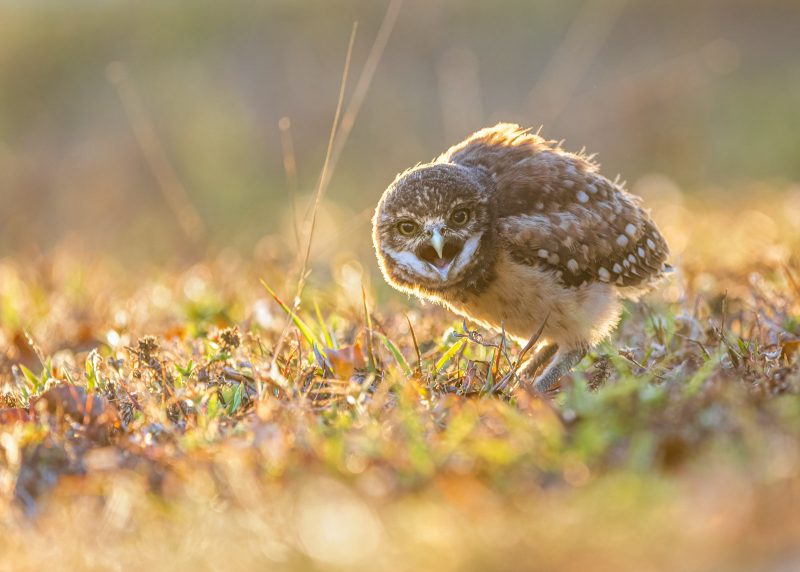
Anything unusual that tests a chick’s survival will be opportunities to create photographs with intention and character.
Perhaps the most exciting phase of a bird’s development is after fledging when they are exploring their surroundings but still rely heavily on support from their parents.
Their diverse behaviors during this timeframe offer many opportunities for photographs with character. They can’t fly far and are easy to find.
If precautions are taken to prevent disturbance to the birds, they can usually be photographed from a reasonable distance.
Look for them jumping around trying to fly, being fed by their parents in open settings, and exhibiting traits of curiosity as they explore their environment.
Stay patient and allow the fledglings to move freely in the area, and you will catch them in unique poses with good backgrounds. Look for interactions between them and their parents.

If photographing multiple birds, change your aperture on your camera to f/8 or smaller to allow for a greater depth of field to get more birds in focus.
Read more: 4 Essential Tips for Photographing Birds in Flight
6. Connection to the environment
Drawing on a bird’s interaction with its environment can also provide unique images of birds with character. Although difficult to do, the results can be magical.

This usually means the bird will be relatively small in the frame with a lot more of the foreground and background playing a role in the image. For this to work, the background needs to be artistically pleasing and could stand on its own in an image without a bird.
When a bird is included in the image, the goal is to show its interaction with its environment or reliance on its habitat. The landscape will need to complement the bird in the scene by focusing a viewer’s attention on it without being distracting.

This is hard to accomplish in an artistic manner. A photographer first needs to be in a place with a pleasing setting that will offer an artistic background. Look for landscape features that will enhance the final composition.
Focus your search for your target birds in these areas. Think like a landscape photographer to find those locations and visit them when the light is at its best.

When birds are present, wait for that moment when they move to locations where the landscape will complement the bird in the scene.
Often, they will interact with the environment by perching in a protected location, feeding on their favorite plants and trees, hunting where their prey will likely exist, and seeking shelter from the elements.

Do your best to combine elements of a bird in its environment; successful images will eventually come with practice.
Read more: How to Photograph Animals in Their Habitat
7. Harsh weather
Weather is always a factor that brings out character in birds. It affects their entire livelihood.
As photographers, we can try to capture a bird’s relationship with the weather conditions, whether it is surviving a harsh storm or making the best of ideal conditions.
If the weather is bad, the birds won’t be in their normal locations. Look for them under cover or in sheltered areas. Photograph them in these situations by including aspects of the weather they are enduring.

Don’t shy away from shooting in low-light situations or gray conditions. Capture images of birds interacting with rain, snow, wind, or blowing dust. You will be getting images of an important part of a bird’s struggle for survival.
Read more: How to Photograph Wildlife in Extreme Weather
In conclusion
In the end, photographing birds to show character will be tied to your own vision and style. The approaches to bird photography that I described will help you explore your own interests in creating photos with intrigue and emotion.
You can refine them to go in an even more unique direction and think of additional approaches that will bring out even more character in your bird photography.
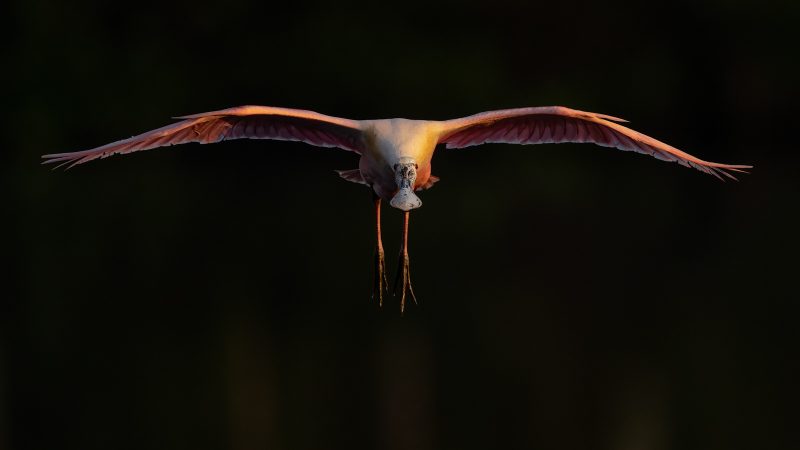
When in the field photographing birds, consider all the possibilities available, which may mean waiting for the birds to move to an intriguing backdrop or staying long enough for the nearby storm to arrive to add an element of survival to your scene.
Keep returning to your favorite bird photography locations and experiment with all the approaches to photographing birds with character!





